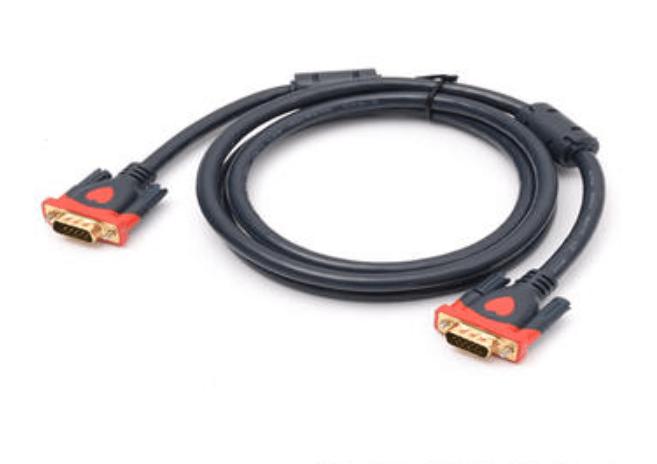
Which is Better HDMI Switch or Splitter?
HDMI technology has revolutionized the way we connect and transmit audiovisual signals. With the increasing number of devices and displays in our homes and workplaces, it's essential to understand the differences between HDMI switches and splitters to determine the most suitable solution for your needs.
This article aims to explore the strengths and optimal applications of HDMI switches and splitters, helping you make an informed decision.
This article aims to explore the strengths and optimal applications of HDMI switches and splitters, helping you make an informed decision.
Introduction to HDMI Switch
An HDMI switch is a device that allows you to connect multiple HDMI sources to a single display. It eliminates the need for constantly swapping cables by providing a simple switching mechanism. When you want to change the input source, the HDMI switch facilitates seamless transition without any loss of signal quality.
The benefits of using an HDMI switch are numerous. Firstly, it simplifies connectivity and cable management by reducing the clutter of multiple cables. Secondly, an HDMI switch offers flexibility in switching between multiple input sources, making it ideal for households or offices with various media devices. Lastly, it enhances the audio and video quality by supporting the latest HDMI standards and technologies.
HDMI switches find common applications in home entertainment systems, allowing users to connect their gaming consoles, Blu-ray players, and streaming devices to a single TV or projector. They are also popular among gamers, enabling them to switch between different gaming consoles effortlessly.
Additionally, HDMI switches are widely used in professional audiovisual environments, such as conference rooms and studios, where multiple sources need to be displayed on a single monitor or projector.
The benefits of using an HDMI switch are numerous. Firstly, it simplifies connectivity and cable management by reducing the clutter of multiple cables. Secondly, an HDMI switch offers flexibility in switching between multiple input sources, making it ideal for households or offices with various media devices. Lastly, it enhances the audio and video quality by supporting the latest HDMI standards and technologies.
HDMI switches find common applications in home entertainment systems, allowing users to connect their gaming consoles, Blu-ray players, and streaming devices to a single TV or projector. They are also popular among gamers, enabling them to switch between different gaming consoles effortlessly.
Additionally, HDMI switches are widely used in professional audiovisual environments, such as conference rooms and studios, where multiple sources need to be displayed on a single monitor or projector.
Introduction to HDMI Splitter
An HDMI splitter, on the other hand, enables you to display the same audiovisual content on multiple output devices simultaneously. It takes a single HDMI source and duplicates the signal to multiple displays. This is particularly useful when you want to showcase content in different areas or when multiple viewers need access to the same video source.
The advantages of using an HDMI splitter include simultaneous display on multiple output devices, such as TVs, projectors, or monitors. It ensures that everyone in a room can see the content without the need for additional cables or setup.
HDMI splitters also maintain the quality of audio and video signals, delivering the same high-definition experience to each connected display. Moreover, they are compatible with multi-monitor setups, allowing you to extend your desktop or create an immersive gaming environment.
HDMI splitters are commonly employed in digital signage and advertising displays, where the same content needs to be broadcasted across multiple screens.
They are also widely used in conference rooms and classrooms, ensuring that presentations or educational materials are visible to all participants. Additionally, monitoring and control rooms utilize HDMI splitters to display critical information on multiple screens for effective decision-making.
The advantages of using an HDMI splitter include simultaneous display on multiple output devices, such as TVs, projectors, or monitors. It ensures that everyone in a room can see the content without the need for additional cables or setup.
HDMI splitters also maintain the quality of audio and video signals, delivering the same high-definition experience to each connected display. Moreover, they are compatible with multi-monitor setups, allowing you to extend your desktop or create an immersive gaming environment.
HDMI splitters are commonly employed in digital signage and advertising displays, where the same content needs to be broadcasted across multiple screens.
They are also widely used in conference rooms and classrooms, ensuring that presentations or educational materials are visible to all participants. Additionally, monitoring and control rooms utilize HDMI splitters to display critical information on multiple screens for effective decision-making.
Factors to Consider When You Choose
When choosing between an HDMI switch and a splitter, several factors should be taken into account:
●Signal quality and degradation
Consider the distance between the source and the displays, as longer cable runs can result in signal degradation. Splitters may require signal amplification for optimal performance.
●Compatibility with devices and resolutions
Check if the switch or splitter supports the resolutions and audio formats of your input sources and output devices.
●The number of input sources and output devices
Determine the maximum number of devices you need to connect and the number of displays you want to show the content on.
●Cable length limitations
HDMI cables have limitations on length, so make sure the switch or splitter can accommodate the required cable length for your setup.
●Budget and cost considerations
Evaluate the costs of switches or splitters, considering your specific requirements and the features they offer.
How to Determine Which one You Should Use?
To choose the most suitable HDMI solution, follow these steps:
●Understand your specific requirements and use case
Determine the number of input sources and output devices, the distance between them, and the desired functionality.
●Evaluate the pros and cons of HDMI switches and splitters
Consider the advantages and disadvantages of each solution based on your specific needs.
●Considerations for Scalability and future expansion
If you anticipate adding more devices or displays in the future, ensure that the chosen solution can accommodate future expansion.
●Seek professional advice or consultation if needed
If you're unsure about which option is best for your setup, consult with audiovisual professionals who can provide expert guidance based on your requirements.
Conclusion
In summary, HDMI switches and splitters serve different purposes and offer unique advantages.
When choosing between an HDMI switch and a splitter, consider factors such as signal quality, compatibility, the number of input sources and output devices, cable length limitations, and your budget. By understanding your specific requirements, evaluating the pros and cons of each solution, considering scalability, and seeking professional advice when needed, you can make an informed decision.
When choosing between an HDMI switch and a splitter, consider factors such as signal quality, compatibility, the number of input sources and output devices, cable length limitations, and your budget. By understanding your specific requirements, evaluating the pros and cons of each solution, considering scalability, and seeking professional advice when needed, you can make an informed decision.







Leave a comment